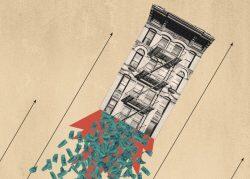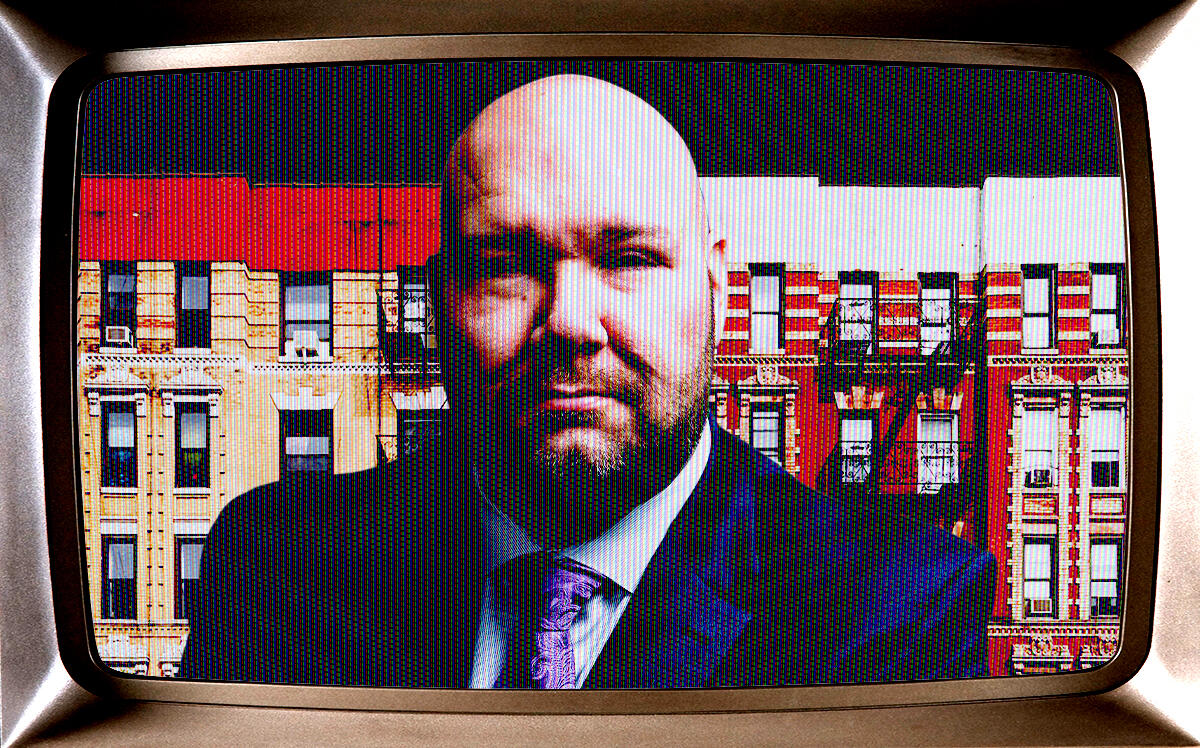Less than a week before the Rent Guidelines Board votes on how much to hike rents for stabilized apartments, landlords desperate for a bump have launched a campaign to draw attention to their plight.
Still, the group behind the awareness drive is the first to admit that owners likely won’t get the increase it says is needed to cover rising costs. At least not this year.
The messaging blitz released Thursday by the Community Housing Improvement Program has three components: a data-backed report, a sleek new website and a TV spot.
Media campaigns are not unusual for real estate, but buying TV time in the nation’s most expensive market is rarer. In this case, CHIP is spending south of $90,000. It launched a separate campaign in April to highlight the 20,000 rent-stabilized units that sit vacant because landlords can’t raise rents enough to pay for needed repairs, the group argues.
CHIP’s new 30-second ad, which has the ring of a political campaign spot, highlights the need to protect rent-stabilized apartments, not owners — a smart if obvious strategy in a town where landlords are vilified. It features Joyce Holland, a small property owner, lamenting the rising costs of running stabilized housing.
“In most buildings, rent doesn’t even cover operating costs,” Holland tells the camera before warning: “It’s only going to get worse.”
It is airing on more than a dozen channels in the city. CHIP also bought over 200,000 cable TV and video-on-demand spots in the greater Metropolitan area. A Spanish language version will run on Spectrum’s Spanish channels.
The group’s accompanying report offers data to back those claims, arguing that owner expenses are greater than what the Rent Guidelines Board has calculated.
Read more



CHIP claims the discrepancy between its figures and the board’s is rooted in differing methodologies and the age of each group’s data. The board’s numbers are from 2020, before inflation shot up. It also excludes certain landlord expenses, notably mortgage payments.
Unfortunately for owners, the Rent Guidelines Board staff uses its own figures to recommend rent raises for stabilized units. The advice helps determine the preliminary thresholds from which the board chooses a final number.
This year the board recommended a 4.5 percent rent hike. Last month, board members approved an increase of 2 percent to 4 percent.
Landlords have asked for a rent hike as high as 9 percent — CHIP’s report claims operating costs will rise by that much if inflation remains at a 40-year high — saying the smaller increases would not keep landlords afloat.
Instead, CHIP’s report asks the board to consider a “reasonable rent adjustment.” But there’s next to no chance landlords will get a 9 percent hike this year. Since the board began voting on a preliminary range in 2004, the final rent hikes have always fallen within the agreed-upon window.
Sheila Garcia, a tenant member who’s served on the board since 2014, said last year that she had never seen the board even consider an increase outside of the preliminary range.
“It’s a bit of a gray area; It’s never been legislated that I understand,” Garcia said. “But the legal team in the city basically thinks that the proposal that gets preliminary approval would be the proposal that we would have to vote within.”
CHIP understands this. Jay Martin, the group’s executive director, said the goal of the campaign is not a Hail Mary hike when the board votes next Tuesday night, but to inform the public of owners’ struggles and perhaps encourage a larger bump next year.
“We feel it’s necessary to explain to tenants why a rent hike is necessary when the media coverage of free-market rent increases is being conflated with this vote,” Martin said.
As of last month, the median rent on market-rate apartments had soared 23 percent in a year, breaking $4,000 a month for the first time in history. Some tenants who signed on to Covid-era leases last year saw their rents jump by as much as 40 percent this spring.
By comparison, tenants paying the average rent for a stabilized apartment, $1,422, will likely see their rents rise by at most 4 percent, or $50.
Tenant advocates call that a substantial amount for the city’s poorest residents.
“That is a lot for someone making the minimum wage,” Garcia said ahead of the May preliminary vote. “That could mean a MetroCard for a couple of weeks. That might mean your kid gets to go on a trip for school.”
But on average, owners spend an estimated $1,548 a month per stabilized apartment: $992 for operating expenses, as calculated by the rent board, plus $356 for the mortgage and $200 on capital — fees not considered by the board.
That comes to a monthly loss of $126 per unit — and CHIP argues that some of the board’s data on operating expenses, such as property taxes, utilities and insurance, understate current costs.
“There has to be a real conversation happening about what the numbers are, even if it isn’t making up for the losses that are happening this year,” Martin said. “This is a problem that’s going to keep happening year after year.”
Martin suggested that CHIP’s campaign could start a conversation around different systems for making stabilized ownership sustainable — perhaps involving offsets or another process for determining rent hikes.
“We’re getting to a point now where housing costs keep going up and up,” Martin said. “So we have to figure that out.”
